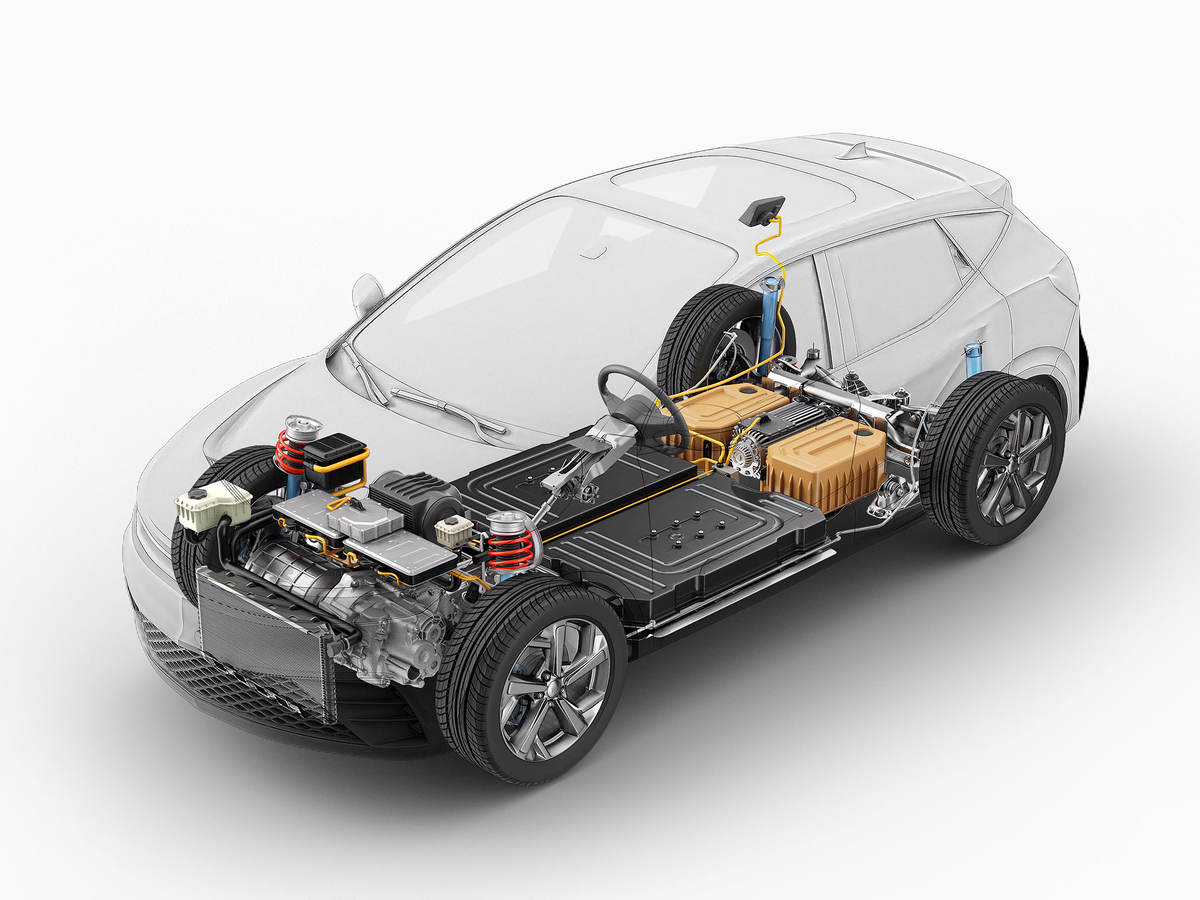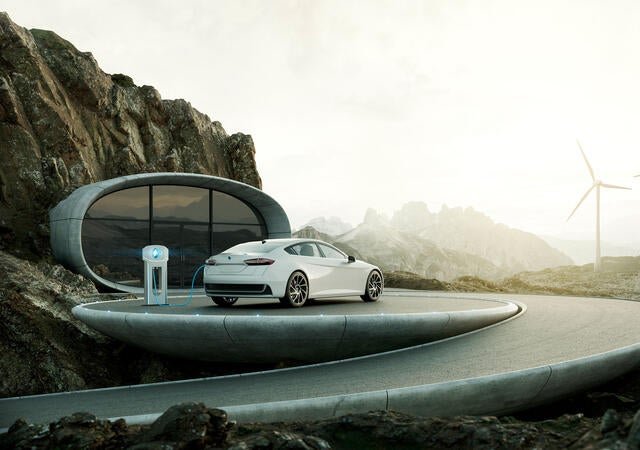Battery-powered electrification is a topic of focus for many UL Solutions customers and stakeholders worldwide. Businesses are considering the implementation implications arising in this new era of electrification and what that means for safe operations and their bottom line. Government officials are optimistic about battery-powered electrification’s economic growth potential while also considering potential safety and security concerns that might impact public well-being.
Cars, trucks, homes and factories all burn fossil fuels in countless engines, furnaces and boilers, creating pollution that heats the planet. The greenhouse gas emissions created by these machines add to climate change. To reduce this impact, they could be replaced with cars, heating systems and factories that run on clean sources of electricity like wind, solar and power plants for the electric grid.
But electrifying everything is a daunting task. It would mean replacing millions of gasoline-powered cars and home appliances that run on natural gas. Electrification also requires sweeping changes to the nation’s power grids so that all those newly electrified cars and buildings don’t strain the system and cause blackouts.
How do batteries fit into this equation? If electrification is key to decarbonizing the world and fighting climate change, batteries will become a crucial power source and storage arena for a sustainable energy future. However, batteries must demonstrate safety, reliability and performance.
At the groundbreaking ceremony for the UL Solutions North America Advanced Battery Laboratory in Auburn Hills, Michigan, four individuals with unique perspectives about the electrification supply chain and the innovation necessary behind new testing, engineering and certification practices came together to address electric vehicle and industrial battery market priorities:
- Kenneth Boyce, senior director, Principal Engineering, Industrial, UL Solutions
- Robert L. Galyen, senior strategic consultant and adviser, Galyen Energy
- Taylor Hansen, president, Webasto Thermo & Comfort, North America Inc.
- Mary Joyce, vice president and general manager, Mobility and Critical Systems, UL Solutions
Discover their answers to timely questions about battery-powered electrification.
Kenneth Boyce: Lithium-ion battery technology is a major focus of battery-powered electrification today. What do you see as the next generation of batteries?
Bob Galyen: I consult with several different companies and work on at least eight different energy storage technologies. At one of these companies, we worked on lithium and advanced lithium. Then we got into sodium, and now you’re seeing condensed matter batteries being announced, which are a type of solid-state battery. Condensed matter batteries have not been around for long; they have already been developed in China but haven’t been commercialized yet.
Everybody’s been talking about this great new sodium-ion battery announced a couple of years ago. They are constructing a plant to build it, but mass production won’t go full speed ahead until the product is verified that the battery actually works for the intended applications.
What other new battery technologies are coming out? A bipolar lead-acid battery technology is being made in Clare, Michigan. That can work extremely well for renewable energy storage applications because it performs well at both cold temperatures and hot temperatures. Lithium doesn’t fit that role as well unless it’s equipped with an expensive thermal management system. Other new technologies include nickel-based chemistries, which could be used in military applications such as silent watch vehicles and small armored vehicle applications because these nickel-based batteries have extremely high-power density.
Other applications may require something different. There’s work going on in Australia right now on an ultra-high-power-density battery called a graphene aluminum-ion battery. Any new emerging technology has to meet the application requirements. There are clear differences in applications between industrial, commercial and automotive batteries and new emerging application requirements.
Kenneth Boyce: What are the risks or concerns for the transition to renewable energy systems, and how do we effectively mitigate these risks?
Bob Galyen: There are five golden rules of electrification, and UL Solutions supports them quite vociferously — safety, performance, life, cost, and environmental. All of those technologies mentioned before have to follow the five golden rules. The preservation of human health and life is so critical, plus protection of assets is essential — all elements of the safety theme. If we don’t pass that safety gate, it’s game over.
Many of the performance characteristics are related to safety. If you’re accelerating to get onto the freeway and an 18-wheeler is coming up behind you at 80 miles per hour, you need power to accelerate. Or if you or a family member is sick and you’re trying to get them to the hospital, you need good energy levels in that battery. So energy and power are essential, but shock, vibration, temperature range, electromagnetic behavior, and so on are just a few of the performance characteristics needed in a battery.
Taylor Hansen: I would agree with Bob that [for batteries], it certainly is important to meet the application requirements. For instance, we discussed sodium-ion batteries, which might become accessible but perhaps not in the immediate future. I’d categorize solid-state batteries similarly.
If battery chemistries were to change to make batteries more sustainable, renewable, and recyclable, that would remove some of the risks and concerns with some of the next-generation batteries. But what can we do to make our supply chain for these materials more sustainable?
Let’s compare lithium manganese iron phosphate (LMFP) to nickel, manganese, and cobalt (NMC). Cobalt, in particular, is not very sustainable, as 75% of the cobalt comes from the Democratic Republic of the Congo. There, you see artisanal mines where people are digging with their hands. It’s very toxic, and the labor practices can be questionable. Is that sustainable? If you’re looking at human health and safety and where the materials come from, perhaps not.
There are other materials, such as iron, that are readily available everywhere.
Kenneth Boyce: How are power usage demands and trends impacting safety?
Mary Joyce: I’ll take it a step broader: What is safety? If it’s not sustainable and it’s not secure, it’s not safe. We are entering a transformational era in the automotive industry and even the stationary industry. Industries that never talked to each other in the past now have to start talking and working together. When you talk about a connected, autonomous, electrified vehicle, you include the energy industry, the telematics of the telecommunications industry and the automotive industry — all huge industries that have controlled their destiny since their beginnings. Now, all three industries must come together to determine what is required for safety, security, and sustainability.
For example, you connect your phone to your car, then you plug your car into a charger, which is connected to the national power infrastructure. You can imagine the damage that could be done if your phone was hacked and that became a national security concern.
There’s also research being done on how the grid is going to be handled safely because you can’t have a grid go down and hospitals go without power. Finding answers to these encompassing issues will require collaboration across the three industries.
Kenneth Boyce: I think that trust is how you build that collaboration and confidence. It’s essential as we see this incredible convergence of the transportation fleet and the infrastructure. Cars are becoming drivable energy storage systems. It’s an amazing time.
Taylor Hansen: One trend that can certainly impact safety is the increasing voltages. It used to be that 300 or 400 volts was the norm in electric vehicles (EVs). Now, 800 volts is the barrier to entry. In the heavy-duty space, they’re looking at 1,200 or perhaps 1,500 volts. The risks increase with the higher voltages. How do we contain those risks in higher voltages, and how high will voltages go? There’s a point at which it’s irresponsible from a safety standpoint to keep increasing voltages.
Additionally, as Mary highlighted, there’s the crucial aspect of cybersecurity. Given that Webasto produces a range of chargers, we’re quite attuned to some of the cybersecurity issues with chargers.
When plugging your car into a charger, it may complete the digital handshake and start charging. However, if the charge curve is steep enough, you could run into an issue. Is the safety threshold always recognized? Because the safety threshold is digital, it can be hacked into and manipulated. That’s a real concern. Increasing voltages is an obvious concern, but cybersecurity may not be so obvious.
Kenneth Boyce: That interconnected network of things is so powerful, but it opens new vulnerabilities. At UL Solutions, we’ve been working with the National Renewable Energy Laboratory (NREL). We just published some cybersecurity requirements for distributed energy resources that are really being picked up throughout the energy domain. It will be important to have a rigorous, proactive defense against cyber-attacks.
Bob Galyen: My role in China was to identify and fix safety problems along the value chain. We would monitor what they were doing in the mining operation and then in processing. The amount of chemicals and materials that are moved through a processing plant is astronomical. Then, those raw materials have to be converted, shipped, or transported to the battery plants. You have to worry about the safety of those chemicals when you bring them into your own factory and how you put them together, as well as the safety practices in every process within the battery plant.
You have to consider the process of safety during assembly at the module level or at the pack level, regardless of whether you’re doing a cell-to-module or cell-to-pack configuration. You need to consider the electrocution hazard; then, you have to worry about getting it out into the application. And once it’s in the application, if there’s a bad accident, you spend some time considering how you recover the battery systems once they’ve catastrophically decomposed in the field. It is essential to train the first and second responders as well as the people at the recycling facility. So, with everything that my colleagues have talked about at the higher level, we worry about getting into the details of every little aspect of the business. Safety is of paramount importance because we’re working with noxious chemicals that you put in a box to store energy, so you must make it safe for people like us and our families to ride around in cars or use in energy storage applications.
Kenneth Boyce: We’re thinking more and more about moving from that take-make-waste linear progression to more circular pathways to extend the life of resources and assets. What do manufacturers need to know about the circular economy of batteries to optimize their impact?
Taylor Hansen: The concept of a circular economy for batteries should be on the radar of every battery cell, module, and pack supplier, as well as original equipment manufacturers (OEMs). It could include recycling batteries down to their smallest constituents, or it could include using them in a second-life application. True circularity is not yet possible, but any level of reuse or recycling can certainly reduce mining — but not eliminate it — over time as more second-life batteries and applications become available. Second life is a great application, but you have to understand what the first life was like. In a vehicle, for example, it’s high-power, high-discharge, high-charge. You generally run them down to about 80% useful life as an industry standard. Assuming they weren’t abused and you can track how they were used, then perhaps it’s applicable for a second life, in which case you might manage it down to 60% or 40% useful life.
Another application for recycled batteries is in microgrids. You can have microgrids of any size. You can have them attached to a building to help with demand balancing for self-consumption optimization. If you’re consuming power at the peak cost period of the day, you’re able to pull from the batteries to supplement that and then recharge the batteries later in the day. Webasto exemplifies these concepts at two of our facilities. One of Webasto’s facilities implements a system to help with demand balancing. The other facility has a system with photovoltaic cells. It’s charging a bank full of second-life batteries to use with Webasto’s alternating current (AC) wall boxes. These batteries can be charged using solar energy from the photovoltaic cells, and if photovoltaic is not available, the batteries will charge from the grid.
But second-life usage is not everything. Depending on the first life, it may be determined that the best thing for the battery is to recycle it. How sustainable is the battery in terms of its remanufacture? If you were going to pull modules out, can the battery housing be reused in a remanufactured battery? Another consideration is designing batteries for recyclability or second-life use. How easily can they be removed from the vehicle? For example, do they fit a particular form factor that might allow them to fit easily into a container? In the car industry, there’s a lot of interest in having the battery pack as part of a structural member of the vehicle. In the commercial vehicle space, you may see more standardization of pack sizes. We’re a long way from being a circular economy, but it should be a strategy for anyone in the battery space or the vehicle space.
Kenneth Boyce: We’ve seen exponential growth in electric vehicle deployment. There’ll be some lag before we see the same exponential growth in batteries becoming available for second-life applications. The gap is a little longer than most people expect.
Taylor Hansen: A first-life application might be eight years. If you put it in a microgrid and it’s an easier use case, it may have a 10-year life. By the time you get around to recycling, the battery is 20 years old. How relevant will today’s battery chemistry be in 20 years? Will there be a market for cobalt for recycling as there is today? There might not be.
Kenneth Boyce: We led the technical development of UL 1974*, the Standard for that repurposing process to assess all those things in an appropriate fashion while also allowing for flexibility of processes that may focus on the entire battery pack, subassemblies, or different chemistries. There needs to be a rigorous, science-based assessment of the repurposing process’s safety and sustainability. It’s getting some interest, but we still have work to do collectively to have the right pathways available.
Mary Joyce: Data, or maybe lithium, is the next oil. Knowing the first life of the battery is going to be so crucial — and not just knowing enough to be able to create a car valuation that says this car is worth this much because the battery is worth that much. You have to have data to understand that battery at the cell level and even at the cooling level. For example, was the battery properly cooled during its entire life cycle? Were all of its cells and modules properly cooled? Were they overcharged at certain points? The data we need to increase safety the next life is more detailed than we have right now, or at least what is released over the onboard diagnostics (OBD) port or through other means. Focusing on that data is really crucial.
Kenneth Boyce: I think there are opportunities to optimize both the physical design and the data collection to make sure, going forward, we get just what we want.
Bob Galyen: You’re going to have a really hard time convincing the OEMs to give that data. They may not want to share that data because it has potential litigation around it. That is a real concern on their part. What Taylor was talking about is absolutely true. There’s a rough life expectancy of five years in commercial bus applications in China. We found out it was about a five-year lag because the bus wears out in approximately five years. It’s not the battery pack; it’s the bus. But the batteries are also worn to a point. Do you really want to use those batteries, or do you want to recycle them directly? So, there are business decisions that have to be made in typical passenger car applications around the definition of end of life. It’s more like 10 to 15 years of service, depending on how the driver drives the vehicle. It is also important to the value of recycling as to which type of cell it is that’s being recycled. Some new technologies being developed can be recycled cost-effectively, while some cannot. Recycling is getting recognition in the lithium world. China has already done it. There’s no question about it.
Learn more about how UL Solutions is helping established and emerging energy marketplaces meet growing demands while protecting people and the environment.
*UL 1974, the Standard for Evaluation for Repurposing Batteries
Energy and Industrial Outlook Newsletter
Start receiving the Energy and Industrial Outlook newsletter and stay ahead of the curve.
Get connected with our sales team
Thanks for your interest in UL's products and services. Let's collect some information so we can connect you with the right person.




